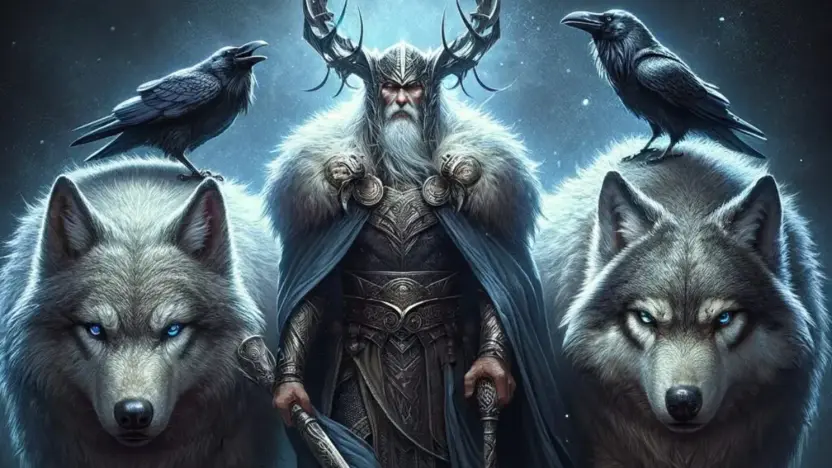Geri and Freki, Odin’s loyal wolves, hold significant roles in Norse mythology, symbolizing the Allfather’s power, wisdom, and insatiable hunger for knowledge. Their names, derived from Old Norse, translate to “the greedy one” (Geri) and “the ravenous one” (Freki), reflecting their insatiable nature. These wolves are often depicted at Odin’s side, emphasizing their role as his constant companions and protectors, especially during battles and feasts.
Origins and Symbolism
According to Norse legends, Odin created Geri and Freki to accompany him during his travels and in Valhalla, the hall of fallen warriors. Their loyalty to Odin was unmatched, symbolizing the bond between humans and animals revered by the Vikings. Wolves were seen as emblems of strength, loyalty, and ferocity, qualities that these mythological creatures embodied fully. They were also viewed as protectors, guarding Odin and serving him by consuming the meat from his table, while Odin himself only drank wine. This connection to food is symbolic, representing the sustenance and strength derived from these fierce animals.

Role in Norse Culture
Geri and Freki’s presence alongside Odin is not just a symbol of companionship but also a reflection of his godly attributes. They are often portrayed in poetic and mythological texts, like the Poetic Edda and Prose Edda, where they are depicted as guardians and even harbingers of Odin’s presence on the battlefield. For Vikings, seeing wolves during battle was considered an auspicious sign, indicating that Odin was watching over them, guiding fallen warriors to Valhalla. This belief strengthened the connection between wolves and the concept of warrior spirit, bravery, and honor in battle.
Mythological Connections and Interpretations
In broader mythological contexts, Geri and Freki have been compared to other mythological pairs across cultures. For instance, some scholars find parallels with the two dogs of Yama, the Vedic god of death, highlighting a shared Indo-European theme of animal companions guiding souls to the afterlife. Additionally, their association with Odin’s ravens, Huginn (thought) and Muninn (memory), forms a comprehensive picture of the Allfather’s dominion over wisdom, war, and the natural world, symbolizing a balance of strength and intelligence.
Cultural Impact: Ulfhednar and Warriors
The legend of Geri and Freki inspired the Úlfhéðnar, a class of Viking warriors who wore wolf pelts and were known for their ferocity in battle. These warriors were believed to channel the strength and cunning of wolves, embodying traits that Geri and Freki symbolized. The wolf-warrior cult, deeply rooted in Norse culture, was a testament to the influence these mythological wolves had, reflecting the belief that Odin himself could take on a wolf form and lead such warriors into battle.
Depictions in Art and Literature
Artifacts, such as the Böksta Runestone and Vendel-era illustrations, depict Odin flanked by wolves, suggesting a deep cultural reverence for these creatures. Geri and Freki appear frequently in skaldic poetry, often used as kennings for battle and carnage, reinforcing their association with war and Odin’s omnipresence in battles. This imagery not only depicts them as protectors but also as guides, leading the brave souls to Valhalla.

Conclusion
Geri and Freki are more than just mythological companions; they are emblematic of the profound connections between nature, war, and wisdom that define Norse mythology. Through their unyielding loyalty, they represent qualities that were vital to the Viking ethos, and their presence in myth and culture underscores the complex relationship the Norse had with their gods, animals, and the natural world. Their tales, though ancient, continue to inspire and inform modern interpretations of loyalty, strength, and the eternal pursuit of knowledge.
Also Read: Hades in Comics and Mythology (Parallel Comparison)



